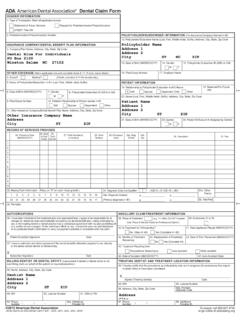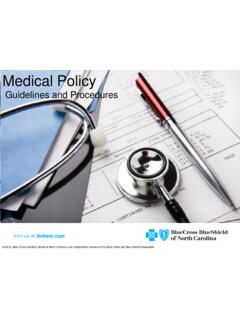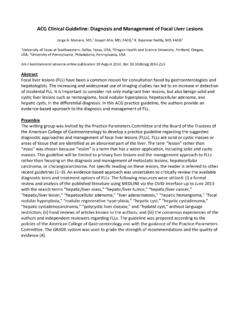Transcription of autografts and allografts in the treatment of focal ...
1 Corporate Medical Policy autografts and allografts in the treatment of focal Articular Cartilage Lesions File Name: autografts_and_allografts_in_the_treatme nt_of_focal_articular_cartilage_lesions Origination: 5/2002. Last CAP Review: 7/2019. Next CAP Review: 6/2020. Last Review: 7/2019. Description of Procedure or Service Osteochondral grafts are used in repair of full thickness chondral defects involving a joint. In the case of osteochondral autografts , one or more small osteochondral plugs are harvested from non- weight-bearing sites in the knee and press fit into a prepared site in the lesion . Osteochondral allografts are typically used for larger lesions. Autologous or allogeneic minced cartilage, decellularized osteochondral allograft plugs, and reduced osteochondral allograft discs are also being evaluated as a treatment of articular cartilage lesions.
2 Damaged articular cartilage can be associated with pain, loss of function, and disability, and can lead to debilitating osteoarthrosis over time. These manifestations can severely impair an individual's activities of daily living and quality of life. The vast majority of osteochondral lesions occur in the knee with the talar dome and capitulum being the next most frequent sites. The most common locations of lesions are the medial femoral condyle (69%), followed by the weight-bearing portion of the lateral femoral condyle (15%), the patella (5%), and trochlear fossa. Talar lesions are reported to be about 4% of osteochondral lesions. There are two main goals of conventional therapy for patients who have significant focal defects of the articular cartilage: symptom relief and articular surface restoration.
3 First, there are procedures intended primarily to achieve symptomatic relief: d bridement (removal of debris and diseased cartilage), and rehabilitation. Second, there are procedures intended to restore the articular surface. Treatments may be targeted to the focal cartilage lesion and most such treatments induce local bleeding, fibrin clot formation, and resultant fibrocartilage growth. These marrow stimulation procedures include: abrasion arthroplasty, microfracture, and drilling, all of which are considered standard therapies. Fibrocartilage is generally considered to be less durable and mechanically inferior to the original articular cartilage. Thus various strategies for chondral resurfacing with hyaline cartilage have been investigated. Alternatively, treatments of very extensive and severe cartilage defects may resort to complete replacement of the articular surface either by osteochondral allotransplant or artificial knee replacement.
4 Autologous or allogeneic grafts of osteochondral or chondral tissue have been proposed as treatment alternatives for patients who have clinically significant, symptomatic, focal defects of the articular cartilage. It is hypothesized that the implanted graft's chondrocytes retain features of hyaline cartilage that is similar in composition and property to the original articulating surface of the joint. If true, the restoration of a hyaline cartilage surface might restore the integrity of the Page 1 of 13. An Independent Licensee of the Blue Cross and Blue Shield Association autografts and allografts in the treatment of focal Articular Cartilage Lesions joint surface and promote long-term tissue repair, thereby improving function and delaying or preventing further deterioration. Both fresh and cryopreserved allogeneic osteochondral grafts have been used with some success, although cryopreservation decreases the viability of cartilage cells, and fresh allografts may be difficult to obtain and create concerns regarding infectious diseases.
5 As a result, autologous osteochondral grafts have been investigated as an option to increase the survival rate of the grafted cartilage and to eliminate the risk of disease transmission. Autologous grafts are limited by the small number of donor sites; thus allografts are typically used for larger lesions. In an effort to extend the amount of the available donor tissue, investigators have used multiple, small osteochondral cores harvested from non-weight-bearing sites in the knee, for treatment of full- thickness chondral defects. Several systems are available for performing this procedure, the Mosaicplasty System (Smith and Nephew), the Osteochondral Autograft Transfer System (OATS, Arthrex, Inc.), and the COR and COR2 systems (DePuy-Mitek). Although mosaicplasty and autologous osteochondral transplantation (AOT) may use different instrumentation, the underlying mode of repair is similar; , the use of multiple osteochondral cores harvested from a non-weight-bearing region of the femoral condyle and autografted into the chondral defect.
6 These terms have been used interchangeably to describe the procedure. Preparation of the chondral lesion involves debridement and preparation of recipient tunnels. Multiple individual osteochondral cores are harvested from the donor site, typically from a peripheral non-weight-bearing area of the femoral condyle. Donor plugs range from 6 mm to 10. mm in diameter. The grafts are press fit into the lesion in a mosaic-like fashion into the same- sized tunnels. The resultant surface consists of transplanted hyaline articular cartilage and fibrocartilage, which is thought to provide grouting between the individual autografts . Mosaicplasty or AOT may be performed with either an open approach or arthroscopically. Osteochondral autografting has also been investigated as a treatment of unstable osteochondritis dissecans lesions using multiple dowel grafts to secure the fragment.
7 While osteochondral autografting is primarily performed on the femoral condyles of the knee, osteochondral grafts have also been used to repair chondral defects of the patella, tibia, and ankle. With osteochondral autografting, the harvesting and transplantation can be performed during the same surgical procedure. Technical limitations of osteochondral autografting are difficulty in restoring concave or convex articular surfaces, incongruity of articular surfaces that can alter joint contact pressures, short-term fixation strength and load-bearing capacity, donor-site morbidity, and lack of peripheral integration with peripheral chondrocyte death. Filling defects with minced or particulated articular cartilage (autologous or allogeneic), is another single-stage procedure that is being investigated for cartilage repair.
8 The Cartilage Autograft Implantation System (CAIS, Johnson and Johnson) harvests cartilage and disperses chondrocytes on a scaffold in a single-stage treatment . The Reveille Cartilage Processor (Exactech Biologics) has a high-speed blade and sieve to cut autologous cartilage into small particles for implantation. BioCartilage (Arthrex) consists of a micronized allogeneic cartilage matrix that is intended to provide a scaffold for microfracture. DeNovo NT Graft (Natural Tissue Graft) is produced by ISTO Technologies and distributed by Zimmer. DeNovo NT consists of manually minced cartilage tissue pieces obtained from juvenile allograft donor joints. The tissue fragments are mixed intra-operatively with fibrin glue before implantation in the prepared lesion . It is thought that mincing the tissue helps both with cell migration from the extracellular matrix and with fixation.
9 A minimally processed osteochondral allograft (Chondrofix ; Zimmer) is now available for use. Chondrofix is composed of decellularized hyaline cartilage and cancellous bone; it can be used off the shelf with precut cylinders (7-15 mm). Multiple cylinders may be used to fill a larger defect in a manner similar to AOT or mosaicplasty. Page 2 of 13. An Independent Licensee of the Blue Cross and Blue Shield Association autografts and allografts in the treatment of focal Articular Cartilage Lesions ProChondrix (AlloSource) and Cartiform (Arthrex) are wafer-thin allografts where the bony portion of the allograft is reduced. The discs are laser etched or porated and contain hyaline cartilage with chondrocytes, growth factors, and extracellular matrix proteins. ProChondrix is available in dimensions from 7 to 20 mm and is stored fresh for a maximum of 28 days.
10 Cartiform is cut to the desired size and shape and is stored frozen for a maximum of 2 years. The osteochondral discs are typically inserted after microfracture and secured in place with fibrin glue and/or sutures. Autologous chondrocyte implantation (ACI) is another method of cartilage repair involving the harvesting of normal chondrocytes from normal non-weight-bearing articular surfaces, which are then cultured and expanded in vitro and implanted back into the chondral defect. ACI techniques are discussed in the BCBSNC Medical Policy titled, Autologous Chondrocyte Implantation.. Related Policies Autologous Chondrocyte Implantation Meniscal allografts and Other Meniscal Implants **Note: This Medical Policy is complex and technical. For questions concerning the technical language and/or specific clinical indications for its use, please consult your physician.
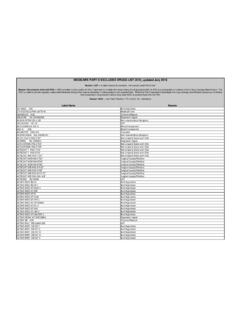
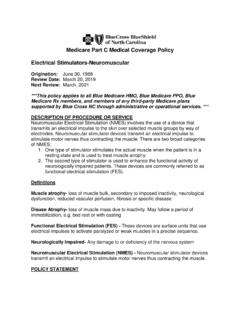
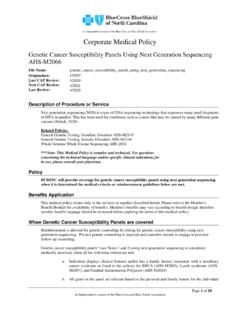
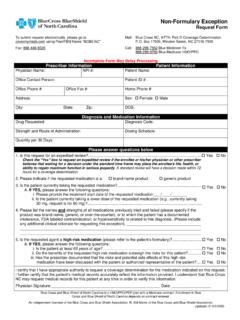
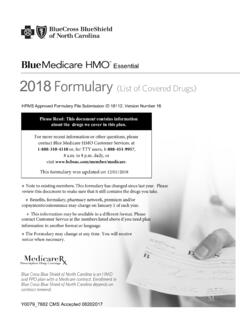
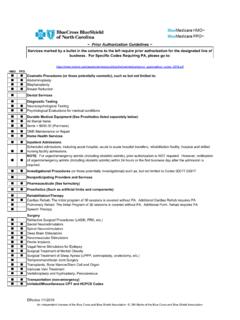
![PRESCRIBER NAME PRESCRIBER NPI [REQUIRED] …](/cache/preview/a/b/7/0/1/8/c/4/thumb-ab7018c4458f456b9838d088cff776b6.jpg)

